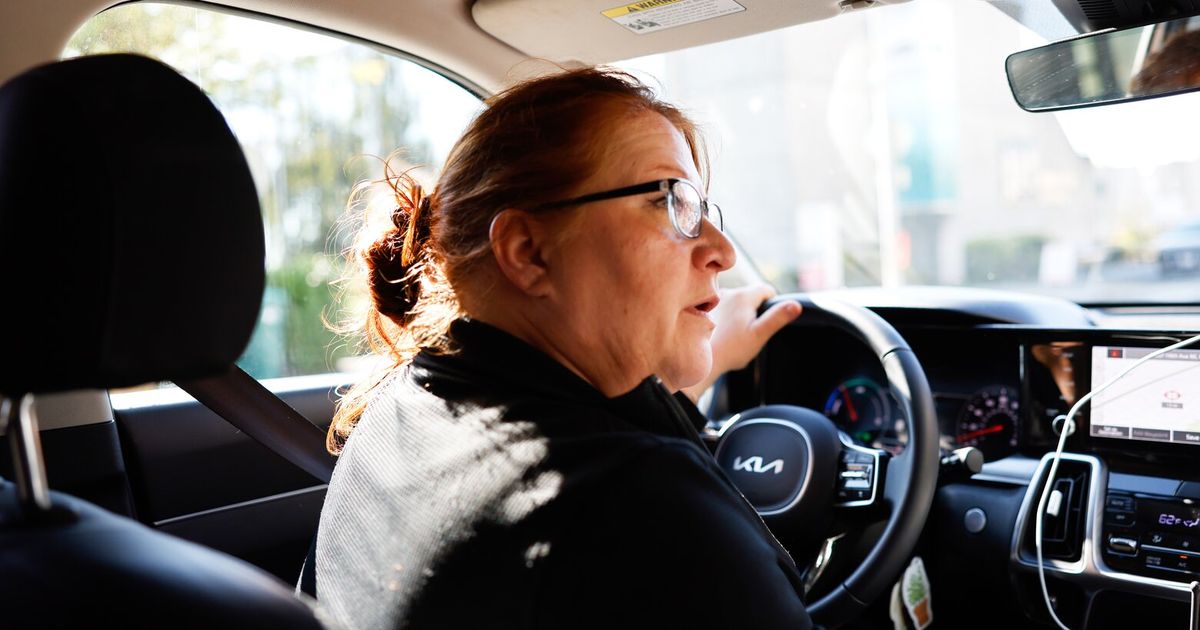As King County begins a massive expansion of its mental health system, a collaboration among some of Seattle’s smaller neighbors may provide a window into the future of care for people in crisis. Since June 2023, the cities of Bothell, Kenmore, Kirkland, Lake Forest Park and Shoreline have collaborated to send mental health professionals to 911 calls alongside police officers and firefighters. The Regional Crisis Response Agency ’s 13 crisis responders assist with calls that have a mental health or substance use component, working to de-escalate crisis situations and help community members connect to resources.
When a walk-in mental health crisis center opens this month in Kirkland, supported by the same five-city coalition, North King County will have the trifecta of crisis services: “somewhere to go” (the center), “someone to respond” (the crisis responders) and “someone to call” (the 988 crisis line). Agencies around the country have sent mental health professionals to respond to 911 calls for decades, but the push for this type of response intensified after George Floyd’s killing by Minneapolis police in 2020. A 2023 study from the University of Washington School of Social Work identified 61 co-response programs in Washington state, operating across 44 cities and 14 counties.

But the programs are often small, with limited staffing and hours. Seattle’s police and fire departments both employ mental health professionals, and the city’s six-person CARE Team has responded to calls downtown since last fall. But Seattle lacks a walk-in center to take people in crisis, who often bounce between emergency departments, jails and homeless shelters.
Brook Buettner, executive director of the Regional Crisis Response Agency, hopes the multicity collaboration in North King County, augmented by the new crisis center, can be a model for other parts of the state. “We’ll really be a proving ground for Washington about how we can better meet people in crisis,” she said. The Regional Crisis Response team joins first responders at a wide range of calls, but people in psychosis, community disturbances or who are experiencing suicidality are some of the most common.
To cover the five-city area, crisis responders are primarily stationed in Shoreline, Bothell and Kirkland, floating over to calls in Kenmore and Lake Forest Park as needed. They’re distributed to try to minimize time waiting in traffic; the agency’s crisis responders don’t drive police cars, and they can’t turn on sirens to bypass traffic. The crisis responders are unarmed and wear casual clothes, not uniforms, to help keep a lower profile than police officers.
They want community members to understand they’re separate from police, supervisor Renée Cox said, although they collaborate closely. The team served 886 community members in 2023 through a mix of in-progress calls and follow-ups. It surpassed that number in the first half of 2024 alone, serving 929 community members across 2,151 encounters.
On an unusually hot June day, Cox pulled into a Kirkland gas station parking lot just after 5 p.m., in an SUV marked “crisis responder.
” A caller had told 911 dispatchers a man pushed him off a bike. When officers found the man, he told them he was hearing voices. Crisis responder Jose Fuentes was already talking to the man, who said his name was Matthew.
The crisis responders’ goals in a situation like this are twofold: de-escalate the situation and help the community member connect to relevant services. While waiting for an ambulance to take Matthew to EvergreenHealth for evaluation, Fuentes and the officers kept up constant conversation. As the late afternoon sun beat down, an officer bought Matthew a bottle of water from the gas station.
When Matthew was worried it was poisoned, Fuentes poured some in his own water bottle to assure him it was safe. “There are people that care about you, and that’s why they brought me on,” Fuentes told Matthew. “We want to get you help, and that’s not jail.
” “I know I hear voices, and I want to be responsible for my actions,” Matthew told Fuentes and the officers. He said he wants to volunteer in the community and play basketball. At 6:35 p.
m., an ambulance pulled into the parking lot. Once Matthew was taken to the hospital, there were two options, Cox said.
If a mental health professional deemed him a danger to himself or others, or too ill to care for himself, he would be involuntarily committed to receive psychiatric care. If he wasn’t committed, Fuentes or another crisis responder would keep an eye out for Matthew’s name on calls and check in on him if they saw him in the community. The agency doesn’t have the capacity to follow people as case workers; staff members follow up when they can and check in on community members they’ve gotten to know over time.
“We’re finding a balance: What’s best for that community member, and what is our role?” Cox said. King County cities had been reimagining how to respond to 911 calls long before the agency began its work last year. In 2017, Shoreline launched the Response Awareness, De-escalation And Referral Navigator Program, which let deputies know before arriving at a scene that they would be encountering a person with a behavioral health issue.
One mental health professional worked alongside officers to share information about community members and connect them with local resources. Neighboring cities were soon interested in joining the initiative, Metropolitan King County Councilmember Rod Dembowski said. In 2018, he met with North King County police chiefs to discuss responses to 911 calls.
The only two options dispatchers could send at the time were police or fire department personnel. “There was a large set of cases where neither was the right response,” Dembowski said at a June 26 celebration of the agency’s anniversary. He brought the chiefs to the Metropolitan King County Council to make the case for funding.
Kirkland, Kenmore, Lake Forest Park and Bothell joined RADAR in 2019, piloting the regional approach to crisis care. “The RADAR program has been on the cutting edge, long before we envisioned what 988 could look like,” said state Sen. Manka Dhingra, D-Redmond, who helped write the federal grant for RADAR before being elected to the state Senate.
Community members who have had contact with the RADAR program since 2019 had 84% fewer jail bookings and 39% fewer emergency department visits in the three years following, according to county data . They used adult crisis services 89% less in that three-year period. In 2020, as calls grew for alternatives to police response, Kirkland’s City Council passed an initiative creating its own Community Responder program that paired mental health professionals with police to respond to calls.
As Kirkland started hiring professionals in 2022, the group of cities also discussed how to expand the RADAR program. Kirkland City Manager Kurt Triplett proposed creating one larger alternative response program, and in early 2023, the current agency was born. About 20% of the agency’s $4.
2 million 2023-24 budget comes from local and federal grants. Kirkland contributes the most funding to the program, but starting in 2025, the five cities will split costs based on their populations. The Mental Health Project team is listening.
We’d like to know what questions you have about mental health and which stories you’d suggest we cover. Get in touch with us at [email protected] .
Sharing resources between “a bunch of little scrappy cities,” as Dembowski described the coalition, helps each of them do more. “It’s the only way cities of our size could do this sort of thing,” Kenmore Mayor Nigel Herbig said. Data isn’t available yet to assess the new agency’s impacts on jail bookings or emergency department visits, but Buettner thinks outcomes will be similar or better than the RADAR program.
“Nothing has changed but to make it better, to make it more accessible, to make it a quicker response,” Buettner said. “I anticipate that we will continue to see strong reductions in crisis services utilization, in jail bookings and emergency department admissions.” The team’s work is just one component of countywide efforts to better support people experiencing mental health crises.
A planned crisis center in Kirkland , expected to open by the end of July, will provide a clear place for people in crisis to go. The center will include 24/7 walk-in behavioral health urgent care and 32 beds for extended stabilization. It will accept adults, regardless of insurance coverage or ability to pay.
“It’ll have a huge impact on our crisis response and first response system,” Buettner said of the Kirkland center. “We’ve had a strong commitment from them never to turn away a first responder that’s bringing someone in acute crisis. That will be a huge impact for my team and for the emergency department because a lot of times that’s the only alternative.
” The Seattle Times Mental Health Project has explored different facets of Washington’s mental health crisis response system, how it works and doesn’t, and examined solutions people are bringing to improve it. The discordant network of emergency rooms, psychiatric institutions, jails, courtrooms and law enforcement, which has long faced challenges, has become even more strained since the pandemic began. What role should police play in mental health calls? Helping someone in a mental health crisis: What to know Designated crisis responders, a ‘last resort’ in mental health care, face overwhelming demand How an old federal rule limits inpatient mental health beds in Washington The role WA courts play in mental health care when someone is in crisis Seattle’s jail has an ‘astronomical’ suicide rate.
Little is changing. A WA town’s proactive approach to mental health care starts on the street Painful memories from inside the mental health crisis system | Mental Health Perspectives What questions do you have about crisis response? EVENT: Learn about WA’s mental health system and how you can help in a crisis Download our printable guide for helping someone in a mental health crisis Kirkland’s center could be chosen as one of five walk-in crisis care centers planned in King County. Funded by a $1.
25 billion property tax levy, the county will begin choosing locations for centers later this year and will open them by 2030. The county believes the centers could serve as many as 70,000 people per year. Entering its second year of operations, the Regional Crisis Response Agency is considering how to grow and improve its services.
The agreement allows other cities to request to join the agency as long as they share a border. Redmond sent a letter of interest in late 2023, Buettner said, and the executive board is considering how to expand without reducing levels of service. The agency isn’t able to get to every call it would like to; she estimates in 2023 at least 5,000 calls would have benefited from a crisis responder’s assistance, and the team responded to 816.
“Some of the questions around the level of service are utilization questions that we’re exploring for ourselves anyway,” Buettner said. “How much of this service is each city utilizing? What’s the unmet need in each of our principal cities?” The agency is also exploring how to stretch coverage from its current 6 a.m.
to 1 a.m. schedule to 24 hours per day.
Buettner’s vision is that crisis responders are a “third tool” for first response and could be directly dispatched like police and fire. To make that happen, they’ll need more funding and a change to the way 911 call centers make dispatch decisions. “We in North King County, along with communities across the United States, are thinking about how to make those decisions in a safe and appropriate way so that people get the resource that they need and responders are safe,” Buettner said.
“The public safety system is seeing unprecedented volume and the crisis responder, or some alternative to police, is what people need.”.


















